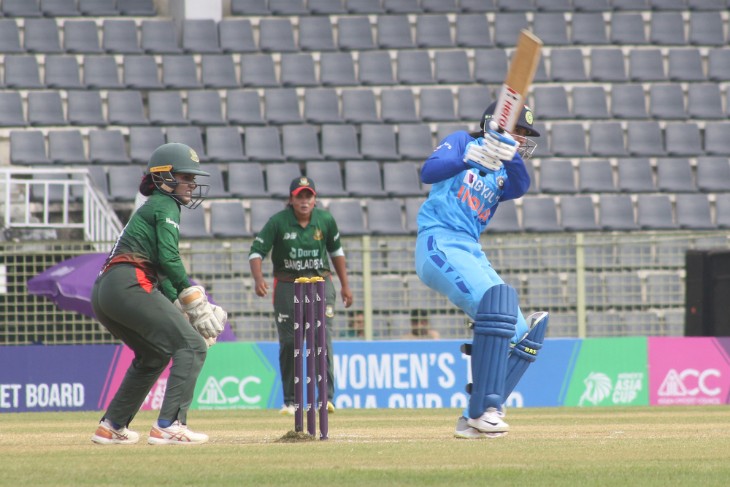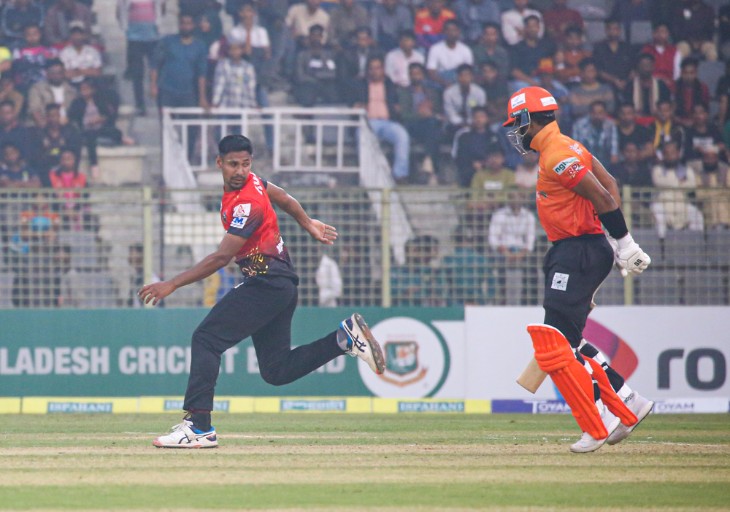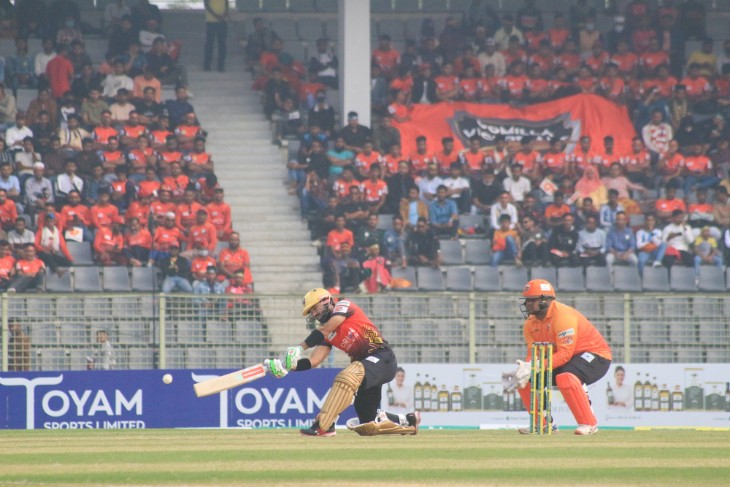Introduction
Bowling faster in cricket is a coveted skill that can be a game-changer on the field. The ability to generate more pace not only makes it challenging for batsmen to respond effectively but also increases your chances of taking wickets. In this guide, we'll delve into the art of bowling faster in cricket, exploring various techniques, strategies, and tips to help you unleash your inner fast bowler.
From refining your bowling action and harnessing the power of body mechanics to understanding the nuances of seam and swing, we will cover a range of factors that contribute to increasing your bowling speed. Additionally, we'll discuss the importance of fitness and strength training to enhance your overall performance.
Role of a Fast Bowler in Cricket
In the realm of cricket, fast bowlers hold a distinct and influential role on the field. They are the frontline warriors, often referred to as the strike bowlers, tasked with the vital responsibility of providing their team with crucial breakthroughs. Their ability to generate pace and movement through the air or off the pitch can prove to be a game-changing factor.
Fast bowlers are, in many ways, the disruptors-in-chief, adept at unsettling the rhythm of opposition batsmen. Their express speed can be highly intimidating and challenging for even the most accomplished batters. This intimidation factor can tilt the balance of power in favour of their team, injecting a sense of urgency and unease in the opposition's batting lineup.
Perfecting Your Run-Up
Perfecting your run-up is a fundamental aspect of fast bowling in cricket. It serves as the very foundation upon which your entire bowling action is built. Perfecting your run-up is crucial for fast bowling, and it involves several key elements:
- Consistency: Maintain a consistent run-up, which includes using the same number of steps and stride length each time you bowl. Consistency builds the foundation for reliable action.
- Pace with Control: While aiming to increase your pace, it's vital to strike a balance between speed and accuracy. Control is essential to ensuring your deliveries are effective.
- Visualise Your Approach: Mental rehearsal is a valuable tool. Visualise your run-up and delivery to develop muscle memory and consistency. This mental imagery helps you perform effectively under match conditions.
- Muscle Memory: Consistency in your run-up and approach helps develop muscle memory, allowing you to instinctively repeat your action with precision, regardless of the situation.
- Balancing Speed and Accuracy: Finding the right equilibrium between velocity and control is crucial. An out-of-control delivery, no matter how fast, can be ineffective against skilled batsmen.
- Mental Rehearsal: Visualisation and mental rehearsal condition your mind and body to work in unison, ensuring that your approach remains powerful and controlled, even in high-pressure match situations.

Working on Your Delivery
Working on your delivery is the heart of fast bowling in cricket. It's in the delivery stride that you release all your energy and generate the raw speed that can unnerve even the most accomplished batsmen. Here are the key aspects to pay attention to when working on your delivery:
Bowling Action: Your bowling action serves as the cornerstone of your delivery. It's crucial to ensure that your action is biomechanically efficient. Seeking coaching and expert guidance to refine your actions is invaluable. An efficient action not only helps maintain your pace but also minimises the risk of injury.
Grip and Seam Position: The grip and seam position on the ball play a pivotal role in a fast bowler's arsenal. Experimenting with different grips and seam positions allows you to maximise your control over the ball. Seam movement, whether it's conventional or reverse, can be a potent weapon. Furthermore, different grips can yield varied deliveries, such as inswingers or outswingers, keeping the batsmen guessing.
Wrist Position: The position of your wrist is nothing short of critical. A strong wrist position is essential for generating the high pace required in fast bowling. It is the wrist that imparts the final surge of energy and pace to the delivery. Additionally, the wrist plays a pivotal role in inducing movement, such as late swing or seam movement, which can deceive batsmen and lead to wickets.
Follow-through: A smooth and balanced follow-through is the punctuation mark of your delivery. It's not merely a formality but an essential aspect of fast bowling. A well-executed follow-through ensures that you maintain your speed and control throughout the entire delivery stride. Abrupt stops at the end of your delivery can increase the risk of injuries, so a composed and balanced follow-through is crucial for your safety and the effectiveness of your bowling.
Improving strength and conditioning
Improving strength and conditioning is a pivotal component in the journey of a fast bowler. Here are the key elements to focus on when it comes to enhancing your strength and conditioning:
Strength Training: A robust and targeted strength training regimen is essential for fast bowlers. It should concentrate on the specific muscle groups employed during your bowling action. Your legs, core, and upper body are the primary areas to work on
Agility and Speed: Incorporating agility and speed drills into your training routine is vital. These drills enhance your acceleration and the ability to change pace quickly. Agility training sharpens your reflexes and ensures that you can adapt swiftly to various match situations.
Endurance: Building endurance is a key component of fast bowling. It is critical to maintain your speed throughout the innings, especially in longer formats of the game. Regular long-distance running and interval training help develop endurance. Long-distance running builds the foundation for stamina, while interval training aids in simulating match conditions.
Flexibility: Flexibility is a frequently underestimated aspect of fast bowling. Regular stretching exercises are essential to increase your range of motion, reduce the risk of injuries, and maintain fluidity in your bowling action. Flexibility enables you to achieve the full range of motion required for your dynamic bowling action.
Mental Preparation
Mental preparation plays a pivotal role in the journey of a fast bowler. It's about cultivating the right mindset and mental skills that can elevate your performance on the cricket field.
Visualisation is a potent tool. By regularly visualising yourself bowling at high speeds and taking crucial wickets, you boost your self-confidence and readiness for actual match situations. This mental imagery creates a positive mental environment that can make a profound difference in fast bowling.
Remaining calm under pressure is another critical aspect. Fast bowlers often find themselves in high-stress scenarios, and the ability to stay composed under such pressure is invaluable. Mental resilience and composure in tense moments can lead to game-changing performances.
Equally important is the skill of analysing batsmen. Understanding their strengths, weaknesses, and tendencies empowers you to devise strategies that exploit their vulnerabilities effectively. This ability to outthink the opposition adds a strategic dimension to your fast bowling prowess.
Join the gym to pitch dots
Joining a gym is a key step for aspiring fast bowlers seeking to enhance their strength and conditioning. Professional gyms offer specialised equipment and expert guidance crucial for developing the power and endurance essential for fast bowling.
Strength Training: Focus on exercises targeting muscles vital to your bowling action, especially emphasising leg strength. Strong legs provide the explosive force necessary for pace bowling, enabling faster delivery speeds.
Core Strengthening: A sturdy core is vital for stability and injury prevention. Core exercises like planks strengthen your midsection, enhance your balance, and prevent injuries during your bowling action.
Upper Body Conditioning: Work on strengthening your upper body, offering crucial support for your shoulder and arm during the delivery stride. Building strength in these areas ensures better control over the ball and reduces the risk of strain injuries.
Stretch where your body stretches
Flexibility often takes a backseat in discussions about fast bowling, but it's a hidden gem for bowlers seeking to maximise their potential. It's the foundation upon which the agility and fluidity of your bowling action rest.
Hamstrings: The hamstrings are an area that deserves special attention. Flexible hamstrings offer several benefits, including increased hip rotation, which is crucial for generating pace. Moreover, flexible hamstrings facilitate a longer stride length, enabling you to cover more ground.
Shoulders: Maintaining good shoulder flexibility is equally essential for a seamless and injury-free bowling action. Flexible shoulders enable a smooth arm action, reducing the risk of strain or injury to this vital part of your body.
Spine and Hips: The spine and hips are like the powerhouse of your bowling action, where power and speed originate. Regular stretching of these areas not only improves flexibility but also prevents stiffness, ensuring that your body can generate the explosive force required for pace bowling.

Copy the Javelin Thrower's Legs
Fast bowlers can draw inspiration from the training routines of these athletes by adopting some of their leg-strengthening exercises:
Squats: Squats are a standout exercise for building leg strength. They target your quadriceps, hamstrings, and glutes, which are central to the explosive power required for pace bowling. A robust base of leg strength enables you to push off the ground with vigour, propelling yourself towards the batsman with heightened speed and energy.
Lunges: Lunges are another valuable addition to your leg-strengthening regimen. They not only work on your leg muscles but also contribute to enhancing balance and coordination. Balance is paramount in fast bowling, ensuring that you can maintain your stability during your approach and delivery stride, even under high-intensity conditions.
Common mistakes and how to correct them
To attain the coveted status of a fast bowler, it's essential to identify and rectify common mistakes that might impede your progress. Here are some frequent errors and how to address them:
Over-Bowling: Overexertion can lead to fatigue and injury. It's imperative to establish a balanced training regimen that includes adequate rest and recovery periods between intense sessions. This approach not only guards against burnout but also helps maintain your rhythm and consistency.
Incorrect Run-Up: A flawed run-up can undermine your pace and control. Collaborating with a knowledgeable coach is essential to ensuring that your run-up is efficient, tailored to your unique style, and optimised for maximum speed.
Poor Wrist Position: The wrist position is a game-changer when it comes to generating pace and movement. Seeking expert guidance from a coach can help fine-tune your wrist position, enabling you to extract every ounce of speed and control from your deliveries.
Bottom Line
Becoming a fast bowler in cricket is a journey that demands dedication, hard work, and a deep understanding of the game. The role of a fast bowler is pivotal, and the ability to bowl at high speeds can be a game-changing factor. By perfecting your run-up, working on your delivery, improving your physical conditioning, and developing your mental attributes, you can significantly enhance your pace and become a potent force on the cricket field. Bowling faster is a combination of technique, strength, and mindset, and with consistent effort, you can achieve your goal and leave a lasting impact on the game.
For more information:


